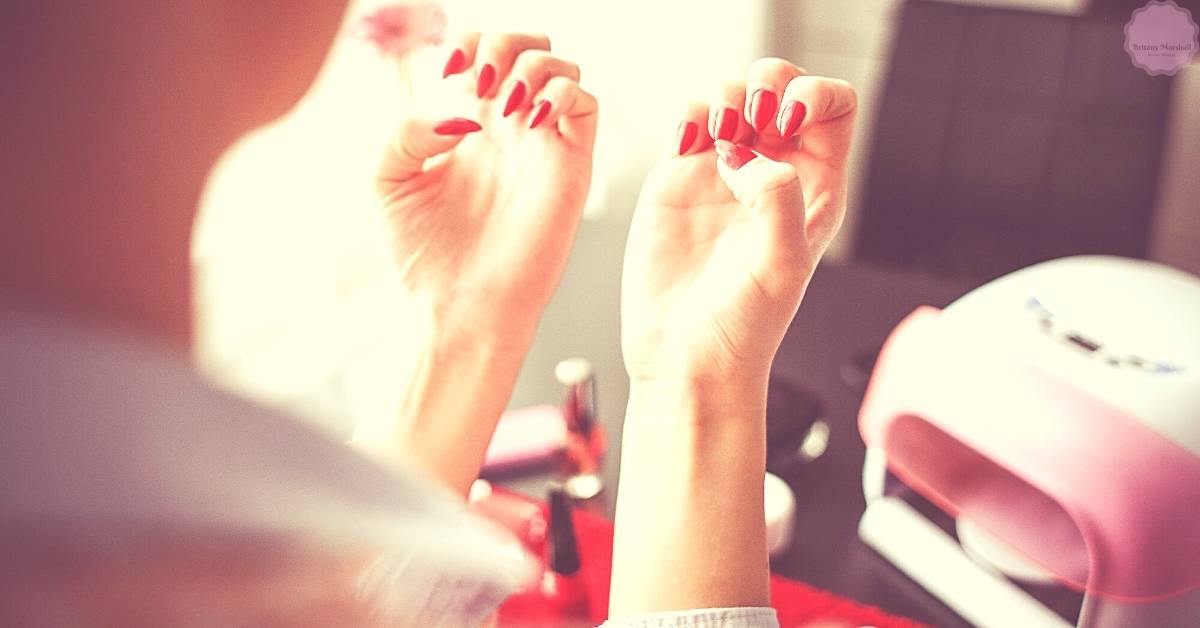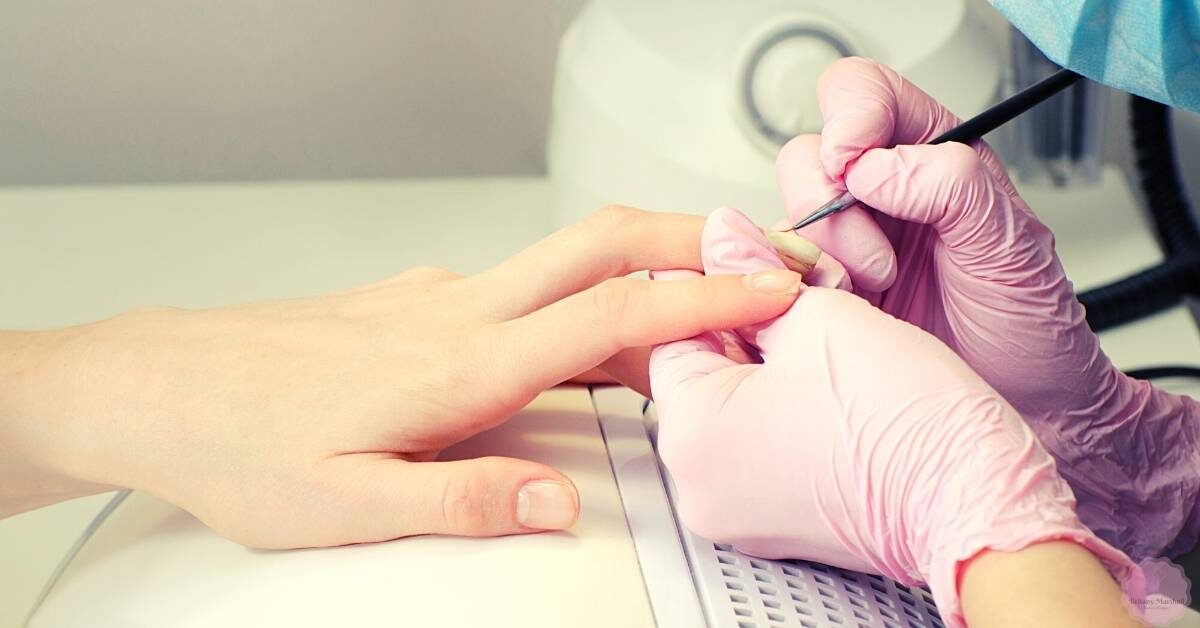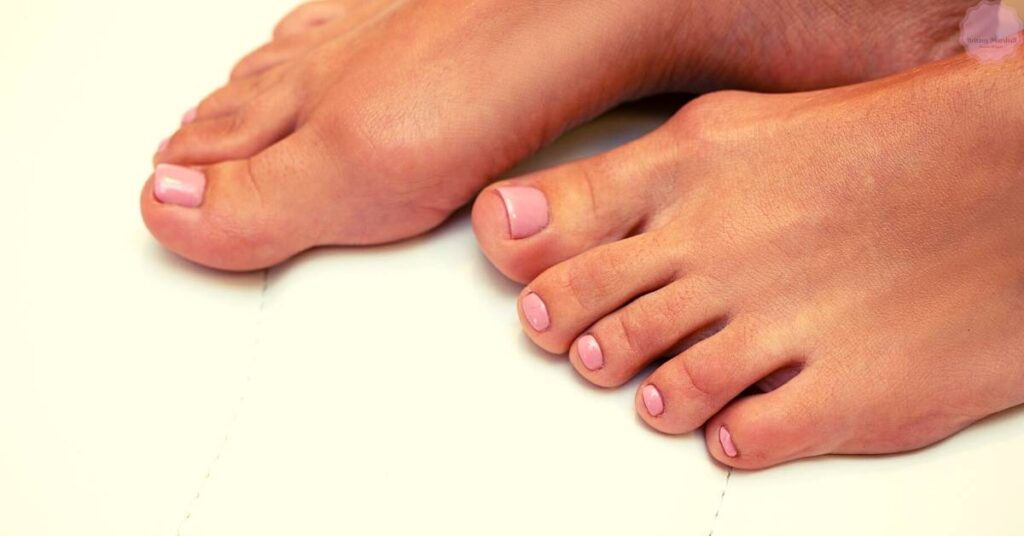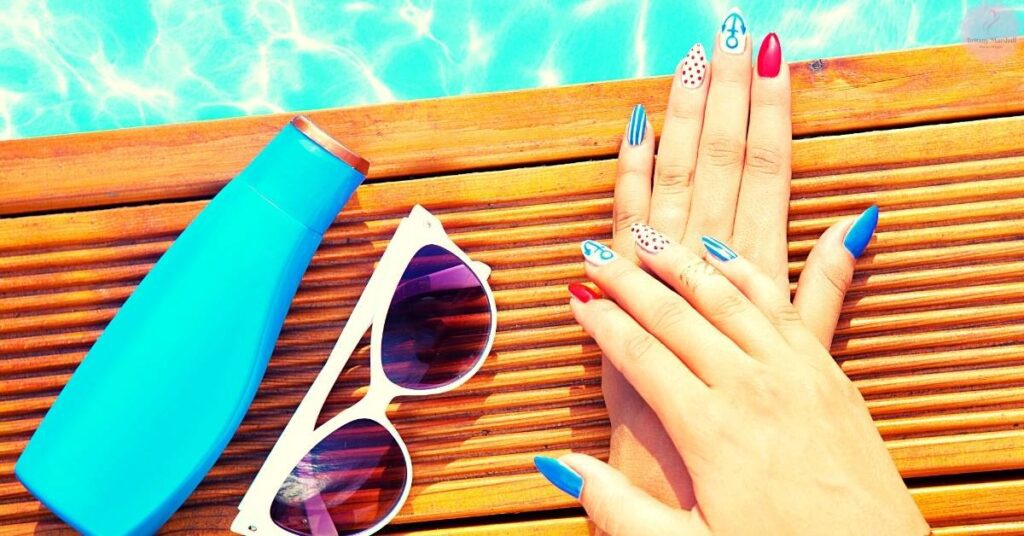You may have noticed that when you apply a coat or two of nail polish on your fingers (or toes), it tends to crumble down pretty quickly. The same goes for any colored basecoat/topcoat combination. This is because most of them tend to dry out faster than normal skin, and then there’s also the issue of all those tiny minor chips, cracks, and cuts in the nail plate itself.
Gel nails help prevent this problem by being made up of layers of clear, smooth polymerized resin. They’re not only more durable but don’t come with the typical issues associated with regular nails like chipping and breaking. Plus, if you find yourself struggling to keep up with taking good care of them, why not just get some professional manicures done every so often? Here are five things to know about taking care of your gel nails.
Contents of Article
- How to clean your gel nails after they’ve been painted?
- How To Clean Gel Nails Properly From Glue
- What do you wipe your gel nails with at the end?
- How to treat cracked nails.
- Frequently Asked Questions
- What do you use to clean your nails after applying gel polish?
- Is it necessary to remove the gel paint off the nails?
- Is nail polish remover an acceptable substitute for rubbing alcohol?
- Does hand sanitizer work as a polish remover?
- Without alcohol, how do you remove the sticky residue from gel nails?
- Is it safe to clean gel nails with acetone?
- Can you use finishing wipes for gel nails?
- Last Thoughts
How to clean your gel nails after they’ve been painted?
The first thing you should never forget before cleaning your gel nails is to make sure that everything has dried completely. If you try to wash away the dirt while the paint layer is still wet, it’ll cause streaks and smears. So wait until your nails have thoroughly cured and hardened.


Next, use warm water to rinse your hands and avoid using soap since it could strip away the chemical sealant used to protect the topmost layer of the nail. Instead, opt for hand sanitizer. And be extra careful not to scrub too hard as this might damage your natural cuticles. After rinsing, gently pat your hands dry without rubbing them against each other. Next, apply an emollient cream over your freshly cleaned nails to restore moisture into the damaged areas. Finally, lightly dust your nails with translucent powder to give them a polished finish.
How To Clean Gel Nails Properly From Glue
After all these steps are complete, it’s time to start thinking about what you need to clean your gel nails properly next.


Read on for five different methods on how to go about doing that:
1. Use cotton swabs soaked with acetone solution
If you want to tackle stubborn bits of leftover nail lacquer, dab them onto a damp cotton swab dipped in acetone. Then run it along the sides of your nail beds carefully. Once finished, wipe your nails clean with a soft towel to ensure no traces of grit remain.
2. Apply baby oil
This method works best when you want to remove excess nail lacquer on your fingertips. Dip a cotton swab into baby oil and rub it across your fingertips, slowly working towards the tip. Finish off by wiping your hands clean with a soft towel afterward.
3. Rubbing alcohol gel
To remove stubbornly stuck-on nail lacquer, pour a small amount of rubbing alcohol onto a cotton swab and swipe it across your fingernail bed. Make sure to work upwards toward the free edge of your nail. Rinse your hands well afterward to remove traces of the solvent.
4. Scrunch up old newspapers
For tougher stains on your gel nails, grab several copies of old newspapers and scrunch them together. Dip one newspaper sheet into olive oil and squeeze its contents with a rubber band. Now repeat this process once again and let it sit for 10 minutes. Afterward, scrape out the paper fibers with a piece of fine-toothed comb and soak your nails in cold water for around 30 seconds. Pat your nails dry with a tissue, followed by applying moisturizer. Repeat the whole procedure twice daily with fresh sheets of newspaper to maintain healthy-looking nails.
5. Washable microfiber cloths
Waxed cloths usually aren’t recommended for washing delicate fabrics such as clothes or towels, but they’re perfect for getting rid of stray particles and grime under your nails. Place a few drops of dishwashing liquid into a bowl containing two tablespoons of ammonia. Gently brush a thin stream of the mixture through your nails with a toothpick or cotton swap to loosen debris from beneath the surface. Rinse well afterward.
Alternatively, you can also choose to follow DIY instructions online for making your nail washer, available here.
Now that we’ve gone through the basics of caring for your gel nails read further for alternative ideas on handling specific situations where you’d usually struggle to remove irritating substances.
Do you want to look, tanner? Here are the best nail colors to choose then!
What do you wipe your gel nails with at the end?
While removing nail polishes is easy enough, the opposite isn’t necessarily true for removal gels. These typically contain solvents that won’t react well with conventional cleansers, meaning you will likely experience irritation. But fear not! There are plenty of alternatives to consider, including some less traditional ones that may prove helpful. Below are a few popular options worth trying.


1. A soft bristle hairbrush
A lotion-based cleanser is ideal for keeping your gel nails hydrated while maintaining their shine. To begin, scoop out a dollop of lotion, spread it evenly across both hands, and massage in circular motions. Be mindful not to press harder than necessary, leading to unnecessary damage. Once finished, rinse your hands well and apply light pressure with a soft towel to speed up drying times.
2. Non-scratch file
One way to soften the edges of your nail plates is by filing them with a non-scratch emery board. Run a single stroke lengthwise upward from the bottom part of your nail towards the tip. Doing this will gradually reduce the thickness of your nails’ outer layers. It’s important to note that this shouldn’t be overdone as it could result in thinner nails. Also, it’s best to use a separate emery board per digit, as filing down your entire nail would inevitably create unsightly nicks.
3. Soft pumice stone
Although technically abrasive, softer volcanic rocks can exfoliate skin effectively. To achieve this effect, hold a few pieces of pumice between your thumb and forefinger. Press downward on either side of your nail plate with moderate force. Remember that you should never apply pressure directly on the nail bed. Otherwise, you risk damaging it. For best results, perform this step weekly to promote healthier, smoother-looking nails.
Best alternative ways to wipe off gel nails
It’s safe to say that there are bound to be instances where your usual routine doesn’t quite suffice. Whether you’re dealing with callous spots or a messier mishap, you should now better understand what to do in specific scenarios. If none of these suggestions seem appropriate, here are three additional alternatives you can try.
First, you can invest in specialized products specifically for removing nail lacquered surfaces. Examples include the Easy Off Gel Polish & Top Coat Remover Pads and the OPI Remove+ Nail Strips. Second, you can resort to high-quality nail art brushes. Lastly, you can even opt to visit your local beauty supply store to ask for assistance. However, remember that these solutions may require multiple applications or special tools, respectively.
So far, we’ve discussed how to manage common issues related to the upkeep of your gel nails. But what happens when you accidentally drop something sharp on your feet? Or worse yet, what happens during a hectic day when you forget to put on socks? Luckily, we’ve got you covered. Below are four quick fixes you can implement right away.
As soon as you notice any bleeding, blot up the blood immediately with tissues or toilet paper. Don’t worry, though. This is perfectly normal and nothing to fret over.
Apply ice packs wrapped in a plastic bag to limit the area affected.
Give your foot a thorough soaking with bottled water to dilute the bloodstains slightly. Avoid submerging your entire shoe.
Once you’ve completed the above steps, wear thick wool socks to provide added protection.
How to treat cracked nails.
Cracked nails happen to everyone who suffers from brittle nails. Fortunately, there are many home remedies that anyone can utilize. One example includes adding one tablespoon of lemon juice and three teaspoons of milk to boiling water. Allow it to cool, add salt, and soak your nails overnight. When you wake up the following morning, peel off dead cells and trim away rough corners. Follow up with another treatment of boiled water mixed with vinegar and sugar.


8 Common Causes of Cracks Under Your Fingers
There are many reasons why your nails might be cracking, but some are more common than others. Below are eight of the most common causes.
- Fingernail trauma
- Dryness
- Excessive exposure to water
- Chemical damage
- Poor nutrition
- Hormonal changes
- Medications
- Incorrect manicure habits
Frequently Asked Questions
What do you use to clean your nails after applying gel polish?
There are a few different ways to clean your nails after applying gel polish. Some people use a nail brush, and others use a cotton ball or pad. I usually use a cotton ball or place. You can find them at most drugstores or grocery stores. Soak the cotton ball or pad in nail polish remover and wipe your nails clean. Make sure to get all of the polish off, including underneath your nails. You may also want to use a nail brush to clean your nails. Then, rinse your hands with soap and water. Your nails should be clean and ready to go!
Is it necessary to remove the gel paint off the nails?
There are a few different schools of thought regarding this question. Some people believe that removing the gel paint off of your nails is necessary before you do anything else, such as putting on nail polish or going to bed. Others believe that it is unnecessary and that you can go about your day-to-day activities with the gel paint still on your nails.
I fall into the latter category. I have never had any problems with my nails while having the gel paint on them. I usually take it off once I’m ready to reapply, which is generally every two weeks. I know some people who have had theirs on for up to four weeks with no problems. So, it depends on your personal preferences and what works best for you.
Is nail polish remover an acceptable substitute for rubbing alcohol?
When it comes to removing gel polish, there are a few different options. Some people use a nail brush, and others use a cotton ball or pad. I usually use a cotton ball or place. You can find them at most drugstores or grocery stores. Soak the cotton ball or pad in nail polish remover and wipe your nails clean. Make sure to get all of the polish off, including underneath your nails. You may also want to use a nail brush to clean your nails. Then, rinse your hands with soap and water. Your nails should be clean and ready to go!
Many people have asked if nail polish remover can be used as a substitute for rubbing alcohol when removing gel polish. The answer is no. Rubbing alcohol is a much stronger solvent than nail polish remover, and it is better suited for removing gel polish. Nail polish remover may not be strong enough to altogether remove all of the gel paint from your nails.
Does hand sanitizer work as a polish remover?
Hand sanitizer is a popular choice for a polish remover, but does it work as well as traditional options like nail polish remover or rubbing alcohol?
The answer is no. Hand sanitizer is not as strong of a solvent as nail polish remover or rubbing alcohol, and it may not be able to remove all of the gel paint from your nails. If you are looking for an effective way to remove your gel polish, I recommend using a more potent solvent like nail polish remover or rubbing alcohol.
Without alcohol, how do you remove the sticky residue from gel nails?
There are a few different ways to remove the sticky residue from gel nails without alcohol. One way is to use a nail brush and some nail polish remover. Another way is to use a cotton ball or pad and some nail polish remover. You can also use a hairdryer to help loosen the adhesive. Soak the cotton ball or pad in nail polish remover and wipe your nails clean. Make sure to get all of the polish off, including underneath your nails. You may also want to use a nail brush to clean your nails. Then, rinse your hands with soap and water. Your nails should be clean and free of any residue!
Is it safe to clean gel nails with acetone?
The answer is yes. Acetone is a powerful solvent capable of removing gel polish from your nails. However, it is essential to use caution when using acetone, as it can be harmful if it is not used correctly. Avoid contact with your skin and eyes, and consistently operate in a well-ventilated area. If you are concerned about the safety of using acetone, you may want to consider using a weaker solvent like nail polish remover or rubbing alcohol.
Can you use finishing wipes for gel nails?
The answer is yes. Finishing wipes are a great way to remove any polish or residue from your nails. They are also gentle on your skin. If you are looking for a quick and easy way to clear your polish, I recommend using finishing wipes.
Last Thoughts
The popularity of gel nails has skyrocketed in recent years, but they can be notoriously difficult to remove. In addition, repeated exposure to UV light from gel manicures increases the risk of skin cancer.
UVA light is emitted by both types of lights, despite the belief that LED lamps are safer than UV lamps. As UVA rays are not blocked by sunscreen, your skin is still a danger of injury.
When it comes to nail and skin care, you have two options: use regular nail polish or take precautions to avoid harm. Regular nail polish offers a great alternative to gel nails without hassle and health risks! If you’re looking for an even safer option, consider using a sunscreen specifically designed for nails. Sunscreen for nails protects your nails from UV light and helps keep them healthy and strong. With either option, you can protect your skin and nails from the harmful effects of UV light.





